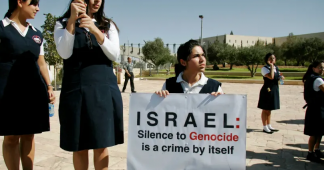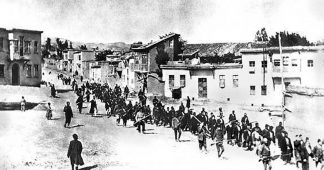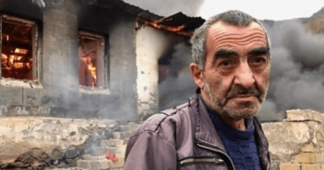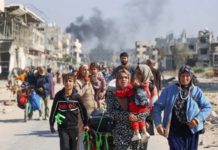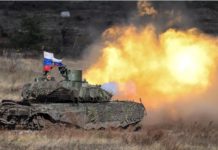30 October 2019
The mass killing of Armenians by Ottoman Turks during World War One remains a highly sensitive issue.
Turkey has resisted widespread calls for it to recognise the 1915-16 killings as genocide, while historians continue to argue about the events. At the time there were numerous reports of Turkish atrocities committed against the Armenians.
The tragedy is in the news again after the US House of Representatives voted to recognise it as genocide. Turkey condemned the vote as a meaningless political step.
There is general agreement that hundreds of thousands of Armenians died when the Ottoman Turks deported them en masse from eastern Anatolia to the Syrian desert and elsewhere in 1915-16. They were killed or died from starvation or disease.
The total number of Armenian dead is disputed. Armenians say 1.5 million died. The Republic of Turkey estimates the total to be 300,000.
According to the International Association of Genocide Scholars (IAGS), the death toll was “more than a million”.
In a letter to Turkish Prime Minister Recep Tayyip Erdogan in 2005, the IAGS said “we want to underscore that it is not just Armenians who are affirming the Armenian Genocide but it is the overwhelming opinion of scholars who study genocide”.
Continue reading at www.bbc.com
Armenian Genocide
The Armenian Genocide (other names) was the systematic mass murder and ethnic cleansing of around 1 million ethnic Armenians from Asia Minor and adjoining regions by the Ottoman Empire and its ruling party, the Committee of Union and Progress (CUP), during World War I.
During their invasion of Russian and Persian territory, Ottoman paramilitaries massacred local Armenians; massacres turned into genocide following catastrophic Ottoman defeat in the Battle of Sarikamish (January 1915), a loss blamed on Armenian treachery. Ottoman leaders took isolated indications of Armenian resistance as evidence of a nonexistent widespread conspiracy. The deportations were intended as a “definitive solution to the Armenian Question” and to permanently forestall the possibility of Armenian autonomy or independence. Armenian soldiers in the Ottoman Army were disarmed pursuant to a February order, and were later killed. On 24 April 1915, the Ottoman authorities rounded up, arrested, and deported hundreds of Armenian intellectuals and community leaders from Constantinople (now Istanbul).
At the orders of Talat Pasha, an estimated 800,000 to 1.2 million Armenian women, children, and elderly or infirm people were sent on death marches leading to the Syrian Desert in 1915 and 1916. Driven forward by paramilitary escorts, the deportees were deprived of food and water and subjected to robbery, rape, and massacre. In the Syrian Desert, they were dispersed into a series of concentration camps; in early 1916 another wave of massacres were ordered, leaving about 200,000 deportees alive by the end of 1916. Around 100,000 to 200,000 Armenian women and children were forcibly converted to Islam and integrated into Muslim households. Massacres and ethnic cleansing of Armenian survivors were carried out by the Turkish nationalist movement during the Turkish war of independence after World War I.
The Armenian Genocide resulted in the destruction of more than two millennia of Armenian civilization in eastern Asia Minor. With the destruction and expulsion of Syriac and Greek Orthodox Christians, it enabled the creation of an ethno-national Turkish state. Prior to World War II, the Armenian Genocide was widely considered the greatest atrocity in history. As of 2021, 30 countries, including the United States, have recognized the events as genocide. Against the academic consensus, Turkey denies that the deportation of Armenians was a genocide or wrongful act.
Continue reading at https://en.wikipedia.org/wiki/Armenian_Genocide
